Azelastine nasal spray, a common over-the-counter allergy medication, has emerged as a potential tool for preventing COVID-19 infections. This antihistamine, traditionally used to treat seasonal allergies, recently demonstrated promising antiviral properties in laboratory studies and clinical trials.
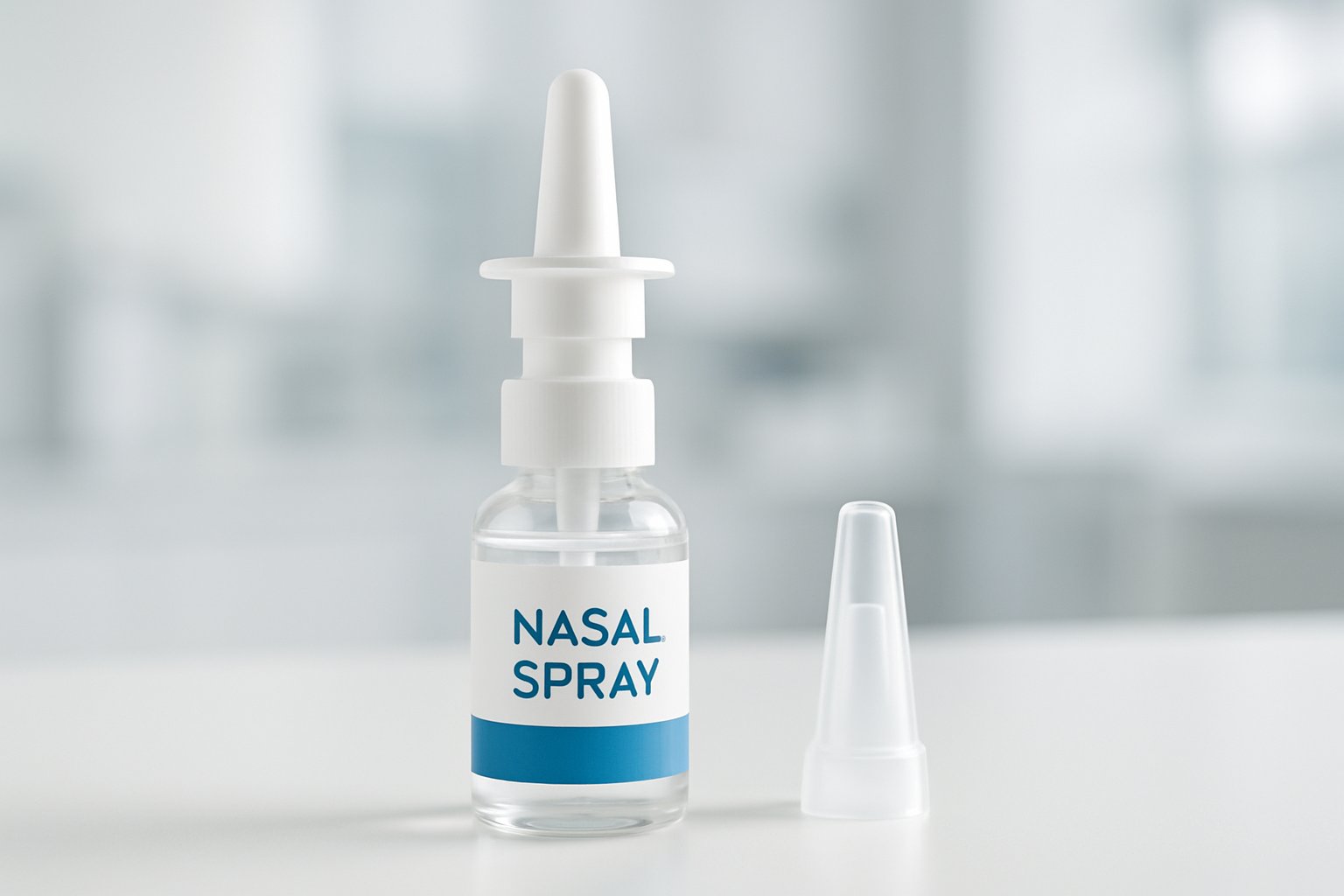
Recent clinical trial results published in JAMA Internal Medicine[1] showed that azelastine nasal spray reduced SARS-CoV-2 infections by approximately 67% compared to placebo in healthy adults. The phase 2 study involved 450 participants who used the spray three times daily for 56 days, with regular testing to monitor infection rates.
The findings suggest that this readily available medication could offer an additional layer of protection against COVID-19. However, researchers emphasize that larger, multicenter trials are needed to confirm these results across diverse populations and age groups before widespread recommendations can be made.
Key Takeaways
- Azelastine nasal spray reduced SARS-CoV-2 infections by about 67% in a recent clinical trial of 450 healthy adults
- The medication works at the nasal mucosa level where viruses typically enter the body, potentially blocking viral entry and replication
- Larger studies are needed to confirm effectiveness across different age groups and higher-risk populations before clinical recommendations
Overview of Azelastine Nasal Spray and Its Use
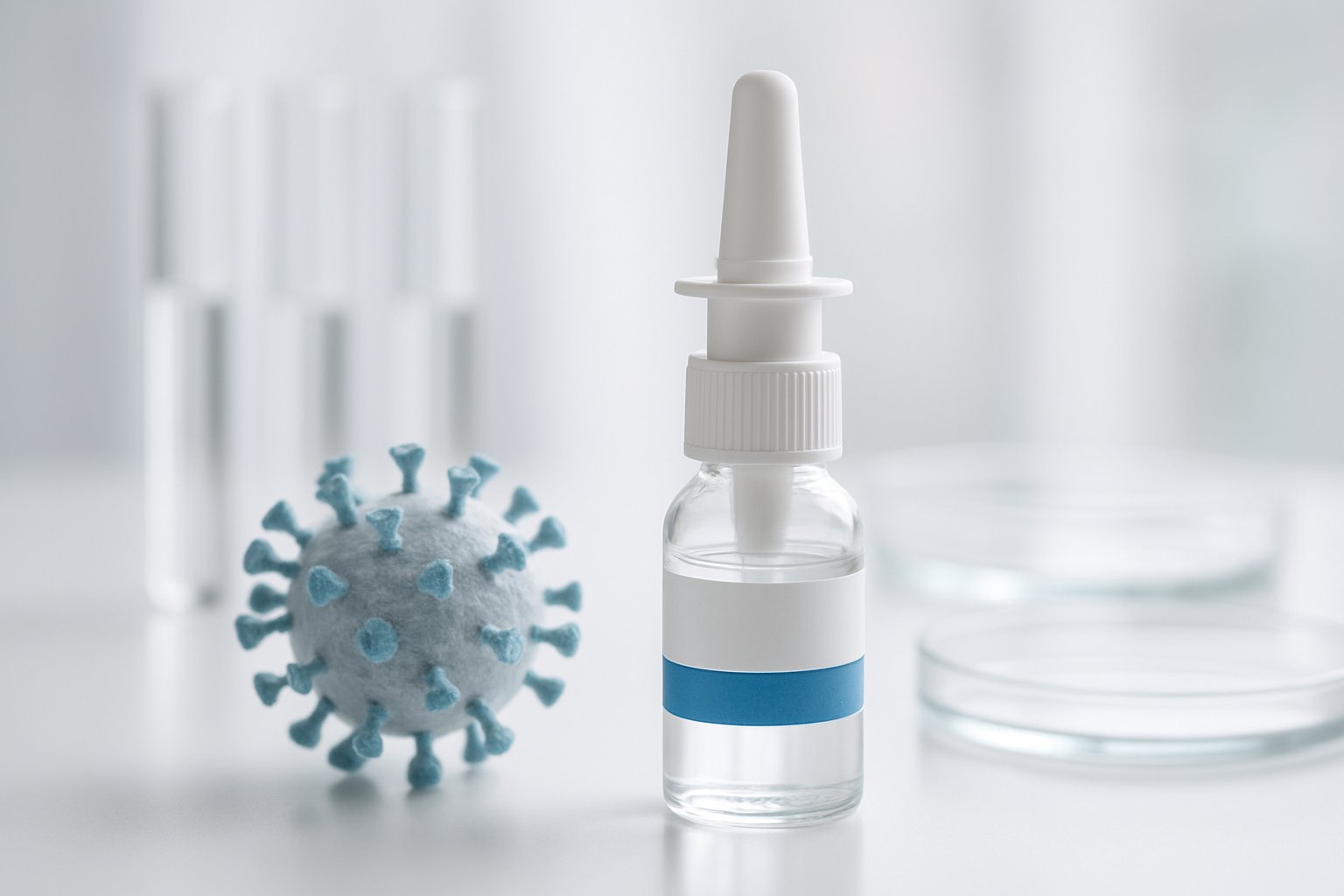
Azelastine nasal spray is a well-established antihistamine medication with decades of clinical use for treating nasal allergy symptoms. The drug has a proven safety profile and is widely available without prescription for adults and children over six years old.
Pharmacological Profile and Antihistamine Activity
Azelastine nasal spray functions as an antihistamine[2] that blocks histamine-1 receptors in nasal tissues. This antihistamine nasal spray works by preventing histamine from causing inflammation and allergic reactions.
The medication provides multiple anti-inflammatory effects beyond basic antihistamine activity. It stabilizes mast cells and reduces the production of leukotrienes and pro-inflammatory substances.
Azelastine is delivered directly to nasal tissues at a concentration of 0.1% weight per volume. This local delivery allows the drug to work where it is needed most.
The medication blocks viral entry points and interferes with early replication processes in nasal passages. These effects occur through binding to ACE2 receptors and sigma-1 receptors in cells.
Historical Use in Allergic Rhinitis
Healthcare providers have prescribed azelastine nasal spray for allergic rhinitis treatment for many years. The medication treats sneezing, runny nose, stuffy nose, and itching[2] caused by seasonal and year-round allergies.
Clinical studies have demonstrated consistent effectiveness for nasal allergy symptoms. Patients typically use the spray twice daily during allergy seasons or when exposed to allergens.
The drug has maintained its position as a first-line treatment option for allergic rhinitis. Medical professionals recommend it for both seasonal allergies and perennial nasal symptoms.
Over-the-Counter Availability and Safety Record
Azelastine nasal spray is available without prescription in many locations. Adults and children at least 6 years old can use the medication[2] safely for allergy relief.
Age restrictions include:
- Children under 6 years cannot use over-the-counter versions
- Children under 12 years need adult supervision during use
- Adults can self-administer without medical oversight
The medication has an established safety profile from years of clinical use. The spray is designed only for nasal use and should not be swallowed or sprayed into eyes or mouth[3].
Side effects are generally mild and limited to local nasal irritation. The long safety record supports its availability as a non-prescription medication.
Mechanisms of Antiviral Action in the Nasal Mucosa
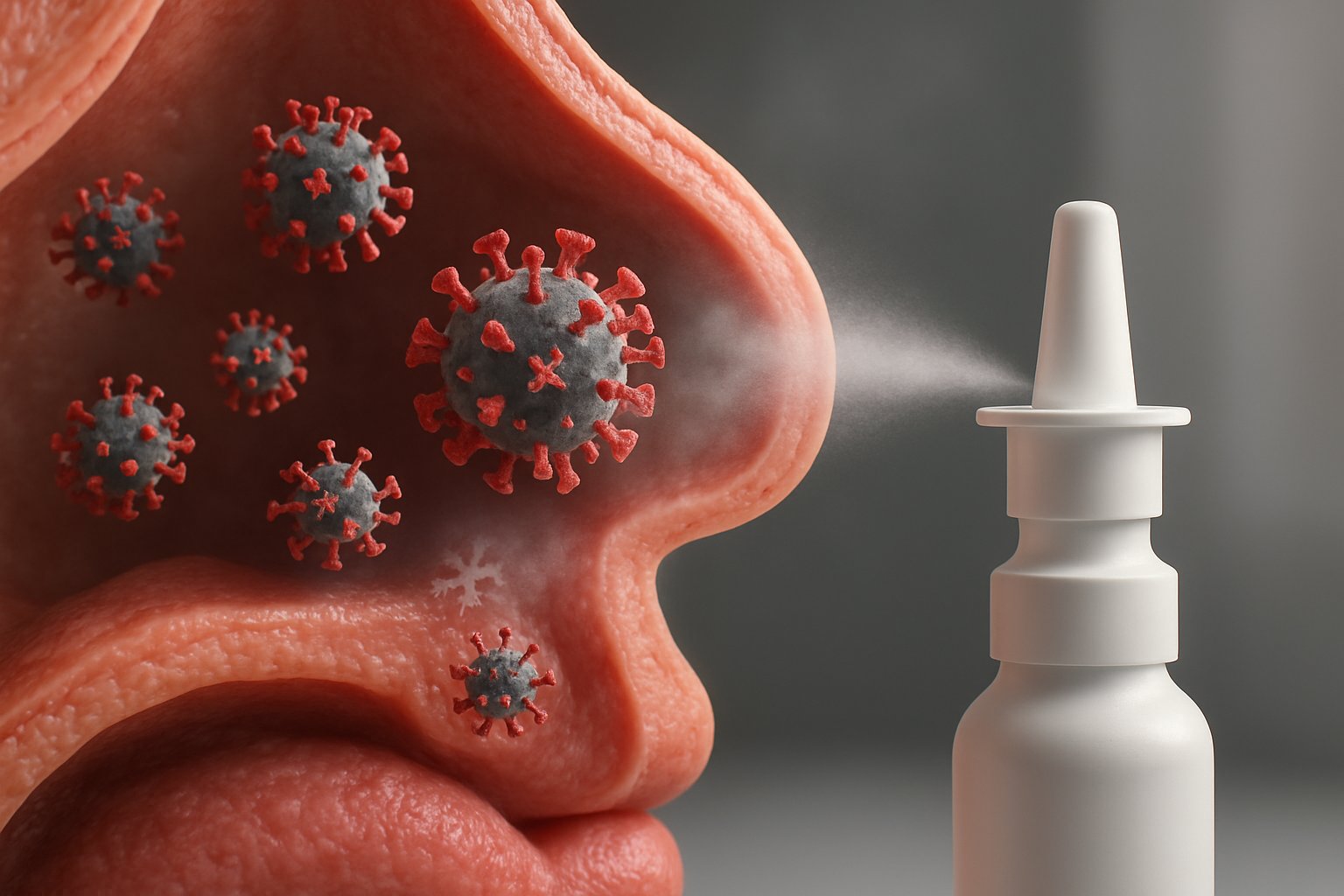
Azelastine works through multiple pathways to block viral entry at the nasal barrier. The drug targets key cellular receptors and stabilizes protective barriers while interfering with viral replication processes.
Role of Nasal Mucosa in Viral Entry
The nasal mucosa serves as the primary entry point for SARS-CoV-2 infections. This tissue contains high levels of ACE2 receptors that the virus uses to attach and enter cells.
Key entry mechanisms include:
- Viral spike protein binding to ACE2 receptors
- Cell membrane fusion and viral penetration
- Initial replication in nasal epithelial cells
The mucosa’s rich blood supply and immune cell presence make it an ideal target for early intervention. When viruses first contact this tissue, they begin their replication process within hours.
Azelastine disrupts this process by blocking viral attachment sites. The medication creates a protective barrier that prevents viruses from establishing infection in nasal tissues.
Epithelial Barrier Stabilization
Azelastine strengthens the nasal epithelial barrier through anti-inflammatory effects. The drug stabilizes mast cells and reduces inflammatory mediator release.
Barrier protection occurs through:
- Reduced cytokine production
- Decreased tissue inflammation
- Improved cell junction integrity
The medication blocks histamine-1 receptors, which reduces swelling and maintains tissue structure. This keeps the protective mucus layer intact and functional.
Stable epithelial barriers prevent viral particles from reaching deeper tissues. The drug also reduces leukotriene production, which helps maintain normal mucus flow and clearance.
Viral Receptor and Protease Interference
Research shows that azelastine can inhibit viral entry by binding to ACE2 receptors[4] and interfering with viral proteases. The drug blocks multiple steps in the viral infection process.
Primary interference mechanisms:
- ACE2 receptor binding competition
- Main protease inhibition
- Sigma-1 receptor interaction blocking
The medication prevents viral spike proteins from properly attaching to host cells. It also interferes with viral replication by blocking key enzymes needed for virus production.
Azelastine’s dual action on both entry and replication makes it effective against established infections. The drug works at the cellular level to disrupt multiple viral processes simultaneously.
Clinical Evidence for SARS-CoV-2 Prevention
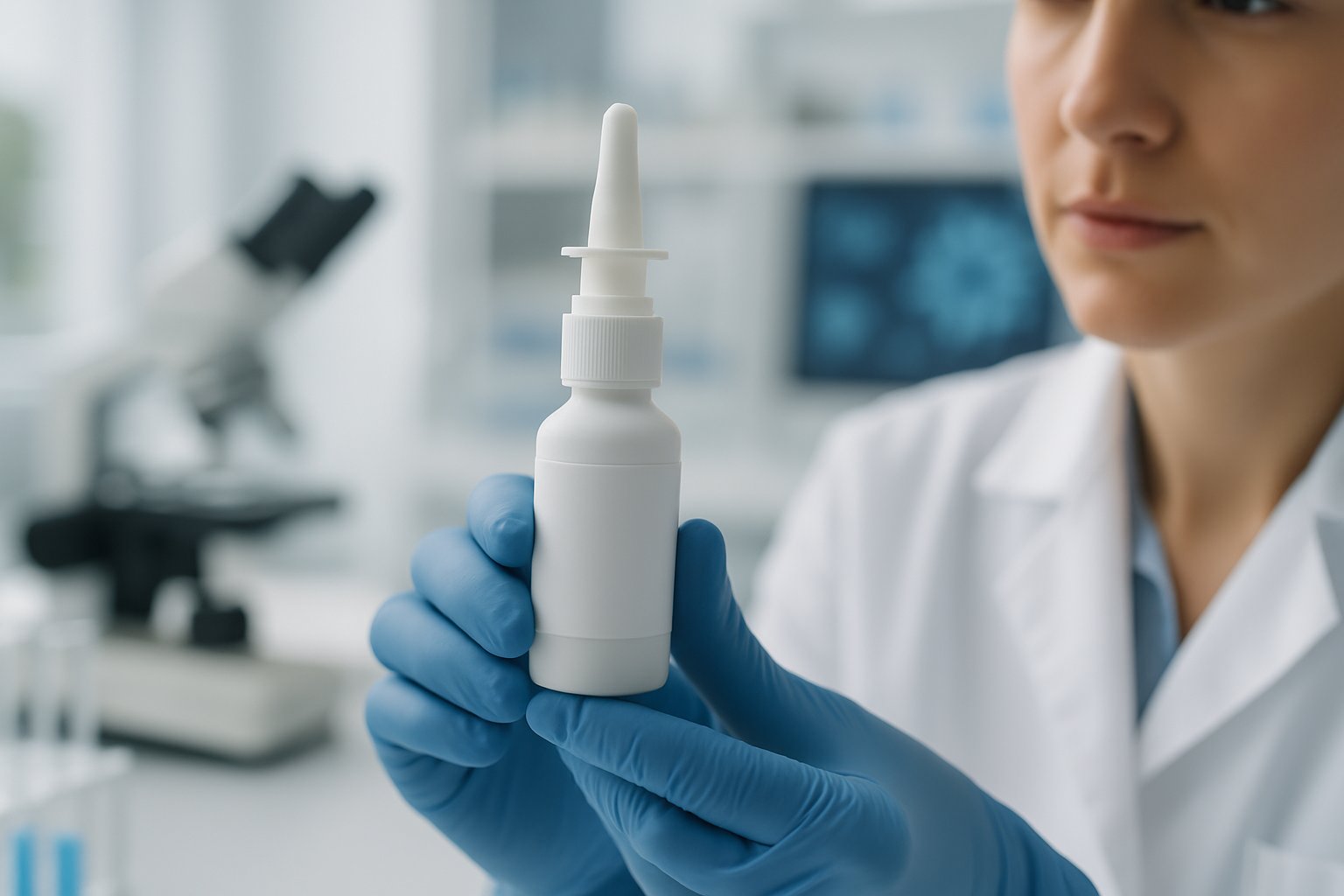
A phase 2 randomized clinical trial published in JAMA Internal Medicine[5] demonstrated significant reduction in SARS-CoV-2 infections among participants using azelastine nasal spray. The study showed meaningful decreases in both laboratory-confirmed infections and symptomatic cases compared to placebo groups.
Phase 2 Randomized Clinical Trial Design
The clinical trial conducted at Saarland University Medical Center[6] followed a double-blind, placebo-controlled design. Participants received either azelastine nasal spray or placebo treatments during the study period.
Study Characteristics:
- Single-center trial design
- Double-blind methodology
- Placebo-controlled comparison group
- Focus on prevention of SARS-CoV-2 infections
The research was sponsored by URSAPHARM Arzneimittel GmbH[5] in collaboration with academic partners. Data collection involved investigators working with a contract research organization.
The trial design specifically targeted individuals at risk for SARS-CoV-2 exposure. Researchers monitored participants for laboratory-confirmed infections throughout the study duration.
Efficacy Results: SARS-CoV-2 Infection Reduction
The randomized clinical trial showed azelastine nasal spray significantly reduced SARS-CoV-2 infections[1] compared to placebo treatments. Laboratory-confirmed cases were notably lower in the treatment group.
Key Findings:
- Reduced risk of laboratory-confirmed SARS-CoV-2 infections
- Lower infection rates compared to placebo group
- Statistically significant results favoring azelastine treatment
The prevention of SARS-CoV-2 infections[7] occurred across different exposure scenarios during the study period. Participants using azelastine demonstrated measurable protection against viral infection.
Safety profiles remained comparable between treatment and placebo groups. Adverse events showed no significant differences between the two study arms.
Impact on Symptomatic and Asymptomatic Infections
The phase 2 trial evaluated both symptomatic and asymptomatic SARS-CoV-2 infections among participants. Azelastine nasal spray reduced respiratory infections[8] caused by the virus across different presentation types.
Infection Impact:
- Reduction in symptomatic COVID-19 cases
- Decreased asymptomatic SARS-CoV-2 infections
- Lower overall viral transmission rates
Laboratory testing confirmed the reduction in both infection categories. Participants underwent regular testing regardless of symptom presence during the study period.
The clinical evidence supports azelastine as a prophylactic approach[9] for preventing various types of SARS-CoV-2 infections. Results suggest effectiveness against multiple infection presentations in the studied population.
Supporting Evidence: Effects on Other Respiratory Viruses

Research shows azelastine demonstrates antiviral activity against multiple respiratory pathogens beyond SARS-CoV-2. Studies indicate the nasal spray reduces rhinovirus infections and shows effectiveness against several common respiratory viruses.
Reduction in Rhinovirus Infections
Rhinovirus represents one of the most common causes of upper respiratory tract infections in humans. These viruses account for approximately 30-50% of common cold cases annually.
Clinical studies demonstrate azelastine’s ability to reduce rhinovirus infection rates. The antihistamine works by blocking viral entry points in nasal tissues. It also reduces inflammation that typically accompanies rhinovirus infections.
Laboratory research shows azelastine interferes with rhinovirus replication processes. The medication creates an unfavorable environment for viral multiplication in nasal passages.
Patients using azelastine nasal spray report shorter duration of rhinovirus symptoms. The spray reduces typical cold symptoms like nasal congestion and runny nose. This dual benefit makes it valuable for both treatment and prevention.
Activity Against Broader Respiratory Viruses
Previous studies suggest azelastine has antiviral effects against SARS-CoV-2 and other respiratory viruses[10]. The medication shows effectiveness against respiratory syncytial virus and influenza A.
Research indicates azelastine works through multiple antiviral mechanisms. It blocks viral binding sites and inhibits specific viral proteins necessary for replication.
Key respiratory viruses affected by azelastine:
- Respiratory syncytial virus (RSV)
- Influenza A virus
- Human rhinoviruses
- SARS-CoV-2
The broad-spectrum antiviral activity suggests azelastine could serve as a general respiratory virus prevention tool. This makes it potentially useful during flu seasons or viral outbreaks.
Studies show consistent antiviral effects across different virus families. The medication maintains effectiveness against both RNA and DNA respiratory viruses.
Testing Methodologies and Endpoints in Clinical Trials

Clinical trials evaluating azelastine nasal spray used multiple testing approaches to detect SARS-CoV-2 infections. These methods included rapid antigen tests for initial screening and PCR confirmation for definitive diagnosis.
SARS-CoV-2 Rapid Antigen Testing Protocols
Rapid antigen testing served as the primary screening method in clinical trials. Participants performed self-administered nasal swab tests at regular intervals throughout the study period.
The testing protocol typically required participants to collect samples every few days. They used standardized collection kits provided by researchers. Test results were recorded within 15-20 minutes of sample collection.
Key Protocol Elements:
- Self-administered nasal swabs
- Standardized collection timing
- Immediate result documentation
- Quality control measures
Positive rapid antigen results triggered additional testing procedures. Participants reported results through digital platforms or direct contact with study coordinators.
The azelastine nasal spray study[1] used this approach to identify potential infections quickly. This allowed for timely intervention and contact tracing when needed.
Polymerase Chain Reaction Confirmation
PCR testing provided definitive confirmation of SARS-CoV-2 infections identified through rapid screening. All positive rapid antigen tests required PCR confirmation within 24-48 hours.
Healthcare professionals collected nasopharyngeal swabs for PCR analysis. These samples underwent laboratory processing using validated PCR protocols. Results typically became available within 1-2 days of collection.
PCR Testing Benefits:
- Higher sensitivity than rapid tests
- Definitive diagnostic confirmation
- Detection of viral genetic material
- Lower false positive rates
PCR-confirmed SARS-CoV-2 infections became the primary endpoint in most studies. This approach eliminated potential false positives from rapid testing alone.
The testing process helped researchers distinguish between true infections and testing artifacts. PCR-confirmed SARS-CoV-2 provided reliable data for statistical analysis of treatment effectiveness.
Multiplex PCR Testing for Respiratory Viruses
Multiplex PCR testing allowed simultaneous detection of multiple respiratory pathogens. This approach helped differentiate SARS-CoV-2 from other common respiratory viruses.
The testing panels typically included influenza A and B, respiratory syncytial virus, and other coronaviruses. Single samples could identify several different viral infections at once.
Multiplex Testing Advantages:
- Comprehensive pathogen screening
- Efficient use of samples
- Differentiation between viruses
- Cost-effective testing approach
Researchers used multiplex PCR testing to understand the broader respiratory infection landscape. This data helped identify whether treatment effects were specific to SARS-CoV-2 or extended to other viruses.
PCR testing for respiratory viruses provided context for interpreting study results. It helped ensure that observed benefits were attributable to SARS-CoV-2 prevention rather than general respiratory protection.
Safety, Tolerability, and Limitations of Current Research
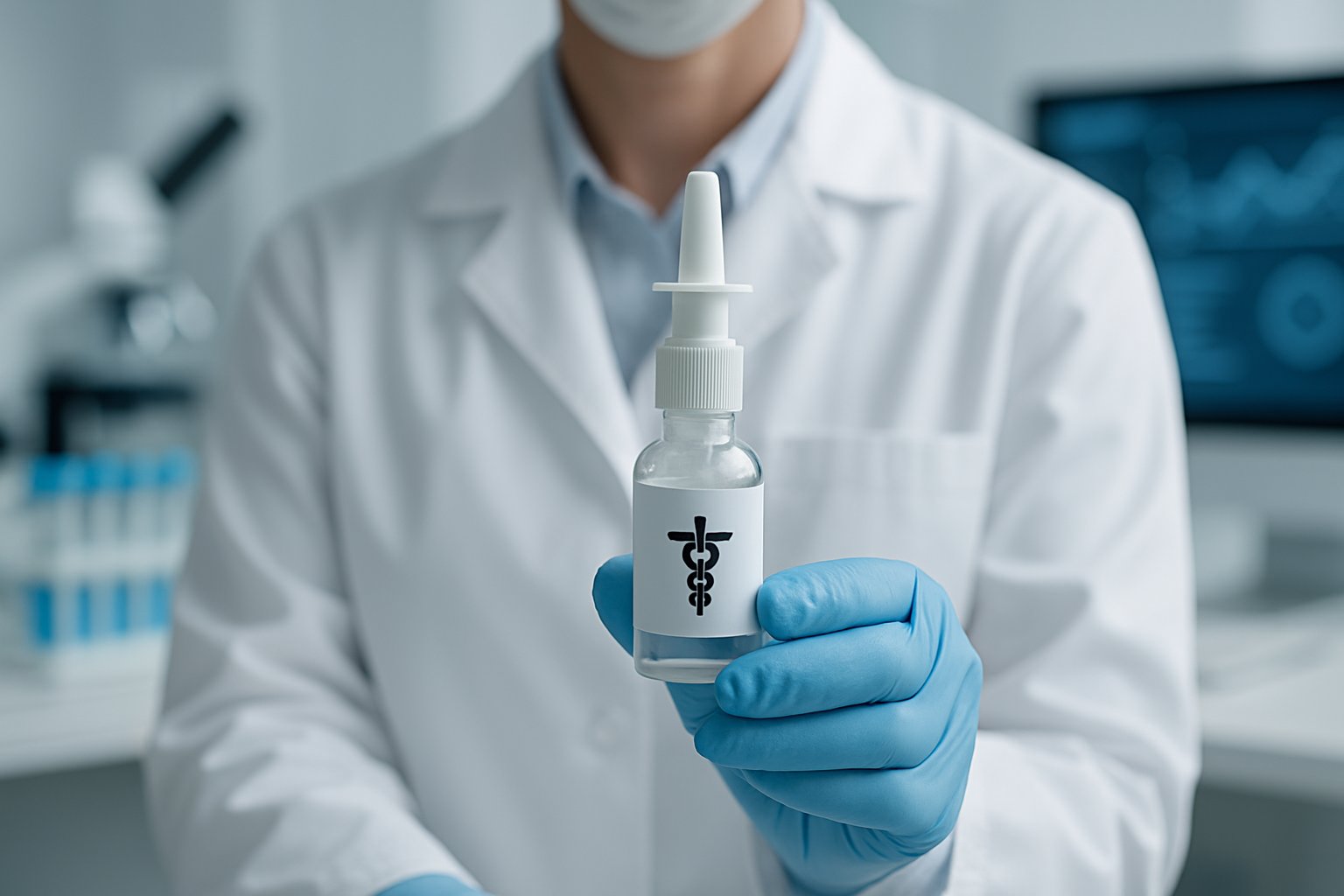
The azelastine nasal spray trial demonstrated good safety profiles with minimal adverse events compared to placebo groups. However, the single-center design at Saarland University and limited participant diversity raise questions about broader applicability across different populations.
Adverse Events and Comparison to Placebo
Azelastine nasal spray showed promise as a safe prophylactic approach[9] in the clinical trial. The study reported no serious safety concerns during the treatment period.
Common side effects typically associated with azelastine nasal sprays include:
- Bitter taste in mouth
- Nasal irritation
- Drowsiness
- Nosebleeds
The placebo-controlled design allowed researchers to distinguish between drug-related effects and background symptoms. Most participants tolerated the medication well throughout the study duration.
Taste-related complaints represent the most frequent issue with azelastine formulations. Current prescription azelastine hydrochloride nasal sprays have limitations in accessibility and taste[11].
The trial’s safety data supports azelastine’s established profile from allergy treatment use. No new or unexpected adverse reactions emerged during COVID-19 prevention applications.
Population Characteristics and Generalizability
The study conducted at Saarland University included a specific demographic that may not represent global populations. Single-center trials often have limited diversity in age, ethnicity, and health status.
Participants likely shared similar environmental exposures and healthcare access patterns. This homogeneity raises questions about effectiveness across different:
- Geographic regions
- Socioeconomic groups
- Age ranges
- Underlying health conditions
Genetic factors affecting drug metabolism could vary significantly between populations. European study participants may respond differently than individuals from other continents.
The trial’s inclusion and exclusion criteria further narrowed the participant pool. Real-world users often have multiple medications and health conditions not represented in controlled studies.
Current Study Limitations and Need for Larger Trials
This single-center trial requires confirmation in larger, multicentric trials[5] according to the research team. The study size limits statistical power for detecting rare adverse events.
Key limitations include:
- Small sample size
- Single geographic location
- Short follow-up period
- Limited variant exposure
URSAPHARM Arzneimittel GmbH sponsored the research, creating potential conflicts of interest despite academic partnerships. Independent replication would strengthen evidence quality.
Phase 2 trial results need validation[1] through larger phase 3 studies before regulatory approval. Multi-center trials would provide data across diverse healthcare systems and populations.
The evolving nature of SARS-CoV-2 variants requires ongoing assessment. Future studies must evaluate effectiveness against emerging strains and potential resistance development.
Practical Considerations and Future Directions
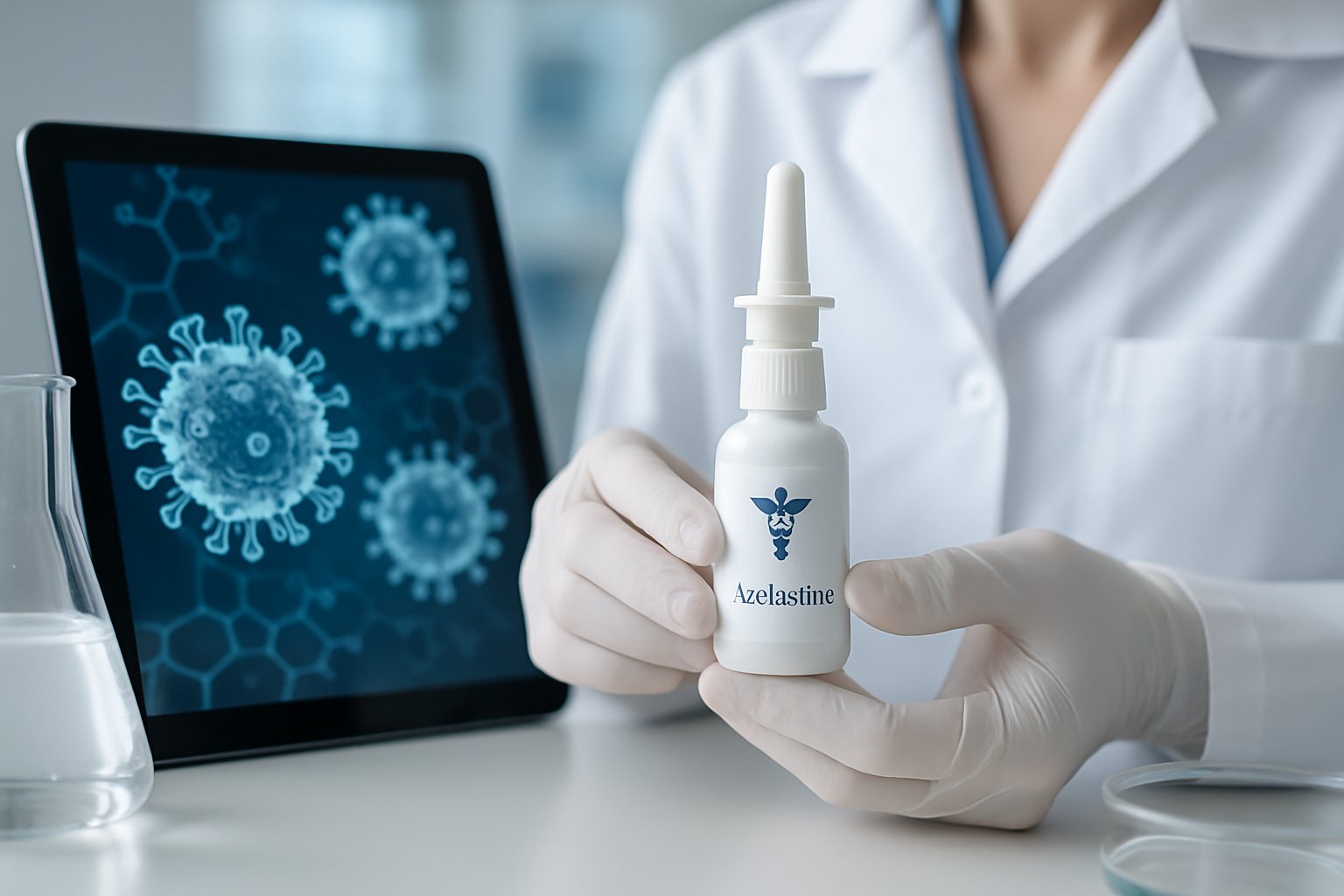
The promising results from the phase 2 trial suggest azelastine could serve as an accessible prophylactic intervention for COVID-19 prevention. Implementation in high-risk environments, integration with existing prevention methods, and expanded research efforts represent key areas for development.
Potential for Preexposure Prophylaxis in High-Risk Settings
Azelastine’s established safety profile and over-the-counter availability[7] make it particularly suitable for preexposure prophylaxis in specific environments. Healthcare workers, travelers, and individuals attending large gatherings could benefit most from this intervention.
The spray’s ease of use allows for on-demand application before exposure events. Three daily applications proved effective in reducing infection rates by 67% compared to placebo groups.
High-risk scenarios where azelastine prophylaxis shows promise include:
- Healthcare facilities during patient interactions
- International travel situations
- Large indoor gatherings or conferences
- Workplace environments with close contact
- Educational settings during outbreak periods
The medication’s steroid-free composition reduces concerns about long-term use. Its approval for individuals aged 6 years and older expands potential applications across age groups.
Integration With COVID-19 Prevention Strategies
Azelastine nasal spray could complement existing COVID-19 prevention measures rather than replace them. The prophylactic intervention works through different mechanisms than vaccines or masking protocols.
Combination approaches may provide enhanced protection levels. Vaccinated individuals in the study still benefited from reduced infection rates when using azelastine prophylaxis.
Practical integration strategies include:
- Using azelastine before entering high-risk environments
- Combining with mask-wearing during peak transmission periods
- Applying as additional protection for immunocompromised individuals
- Implementing in workplace prevention protocols
The intervention’s immediate availability offers advantages over other prophylactic methods. No prescription requirements or specialized training make implementation straightforward.
Healthcare providers can easily incorporate azelastine recommendations into existing prevention counseling. The familiar antihistamine format reduces patient hesitation about new treatments.
Recommendations for Further Research
Larger multicenter trials are needed[1] to confirm these initial findings across diverse populations. The single-center design limits generalizability of current results.
Priority research areas should focus on:
| Research Focus | Key Questions |
|---|---|
| Dosing optimization | Frequency and duration of use |
| Population studies | Effectiveness across age groups |
| Variant protection | Activity against new SARS-CoV-2 strains |
| Long-term safety | Extended prophylactic use effects |
Studies examining optimal timing of application relative to exposure events could improve effectiveness. Research into combination prophylaxis with other interventions may reveal synergistic benefits.
Pediatric trials represent another important research direction. Current approval covers ages 6 and older, but specific COVID-19 prevention data in children remains limited.
Cost-effectiveness analyses will help determine appropriate implementation strategies. Comparing azelastine prophylaxis to other prevention methods could guide healthcare policy decisions.
Frequently Asked Questions
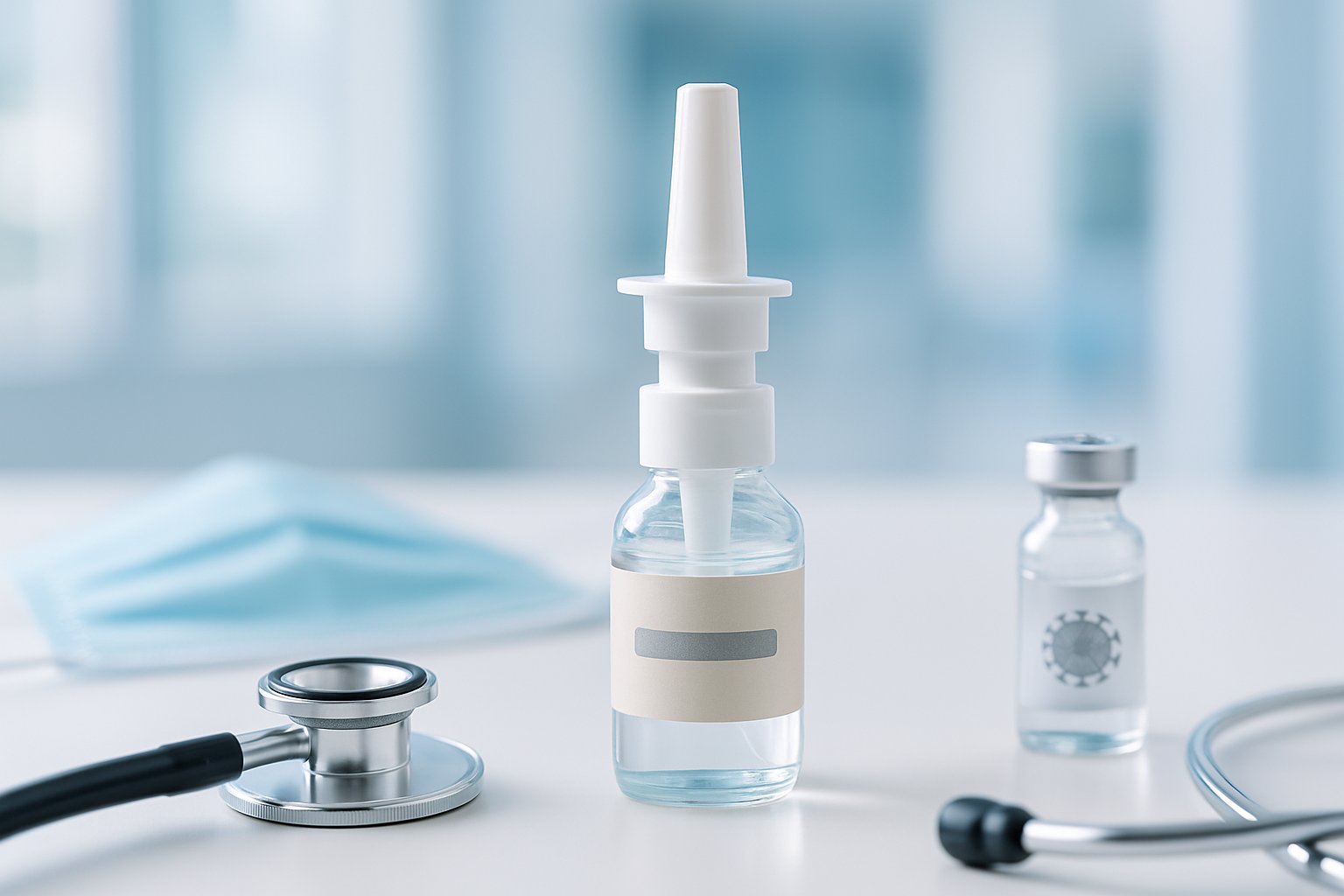
Recent clinical trials show azelastine nasal spray reduced COVID-19 infections by 67% compared to placebo. The spray is FDA-approved for allergies and available under brand names like Astepro.
What are the results of the Phase 2 clinical trial for Azelastine nasal spray in preventing COVID-19?
The Phase 2 trial showed azelastine nasal spray significantly reduced SARS-CoV-2 infections[1] compared to placebo. Only 2.2% of participants using azelastine developed COVID-19 versus 6.7% in the placebo group.
This represents a 67% reduction in infection risk. The study included 450 healthy adults who used the spray three times daily for 56 days.
Participants who did get infected while using azelastine took longer to develop the infection. The average time to infection was 31.2 days with azelastine compared to 19.5 days with placebo.
The trial also found fewer symptomatic infections overall in the azelastine group. There were 21 symptomatic infections with azelastine versus 49 with placebo.
What are the brand names of nasal sprays containing Azelastine?
Astepro is the most common brand name for azelastine nasal spray. Bayer manufactures this over-the-counter antihistamine spray.
The medication is available in 0.1% concentration for adults and children. Generic versions of azelastine nasal spray are also available from various manufacturers.
Which nasal sprays are recommended for reducing the risk of COVID-19?
Currently, no nasal sprays have official FDA approval specifically for COVID-19 prevention. The azelastine study represents early research that requires larger trials for confirmation.
Healthcare providers may discuss azelastine as a potential option based on the Phase 2 trial results. Patients should consult their doctors before using any nasal spray for COVID-19 prevention.
The study authors noted that larger multicenter trials are needed to confirm these findings. More research is required across different age groups and risk categories.
Does Azelastine nasal spray possess antiviral properties that combat SARS-CoV-2?
Azelastine appears to work through multiple mechanisms at the nasal mucosa level. The drug may stabilize the epithelial barrier where viruses typically enter the body.
Research suggests it interferes with viral docking via ACE2 receptors. Azelastine may also inhibit the SARS-CoV-2 protease needed for viral replication.
The medication suppresses ICAM-1, which serves as a key receptor for rhinoviruses. These combined actions likely reduce successful viral replication at the entry point.
What symptoms or conditions does Azelastine nasal spray typically treat?
Azelastine is FDA-approved for treating seasonal and perennial allergic rhinitis. It helps relieve nasal congestion, sneezing, itching, and runny nose caused by allergies.
The antihistamine blocks histamine receptors to reduce allergic reactions. It has been available for decades and is generally well tolerated by most patients.
Common side effects include bitter taste, drowsiness, and nasal irritation. Most people can use azelastine safely for extended periods when treating allergies.
Has Azelastine nasal spray been featured in any peer-reviewed medical journals for its efficacy against SARS-CoV-2?
The Phase 2 clinical trial was published in JAMA Internal Medicine[4] in September 2025. This represents the first major peer-reviewed publication on azelastine for COVID-19 prevention.
JAMA Internal Medicine is a highly respected medical journal. The publication adds credibility to the research findings on azelastine’s potential antiviral effects.
The study underwent rigorous peer review before publication. Independent experts evaluated the methodology, results, and conclusions before acceptance.
References
- Azelastine Nasal Spray Reduces SARS-CoV-2 Infections in Phase 2 Trial. https://www.contagionlive.com/view/azelastine-nasal-spray-reduces-sars-cov-2-infections-in-phase-2-trial Accessed October 21, 2025
- Azelastine nasal Uses, Side Effects & Warnings. https://www.drugs.com/mtm/azelastine-nasal.html Accessed October 21, 2025
- Azelastine Nasal Spray: MedlinePlus Drug Information. https://medlineplus.gov/druginfo/meds/a697014.html Accessed October 21, 2025
- Azelastine Nasal Spray Prevents SARS-CoV-2 Infection when Vaccines Fail. https://publichealthpolicyjournal.com/azelastine-nasal-spray-prevents-sars-cov-2-infection-when-vaccines-fail/ Accessed October 21, 2025
- Azelastine Nasal Spray for Prevention of... : JAMA Internal Medicine. https://www.ovid.com/journals/jaim/fulltext/10.1001/jamainternmed.2025.4283~azelastine-nasal-spray-for-prevention-of-sars-cov-2 Accessed October 21, 2025
- Clinical Study Finds Azelastine Nasal Spray Cuts Coronavirus Infection Risk. https://scienmag.com/clinical-study-finds-azelastine-nasal-spray-cuts-coronavirus-infection-risk-by-two-thirds/ Accessed October 21, 2025
- Azelastine Nasal Spray Reduces Risk of SARS-CoV-2 Infection. https://www.pharmacytimes.com/view/azelastine-nasal-spray-reduces-risk-of-sars-cov-2-infection Accessed October 21, 2025
- Lehr: Azelastine Nasal Spray for Prevention of SARS-CoV-2 Infections. https://c19early.org/lehr.html Accessed October 21, 2025
- Azelastine nasal spray shows promise in preventing SARS-CoV-2 infections. https://www.chestphysician.org/azelastine-nasal-spray-shows-promise-in-preventing-sars-cov-2-infections/ Accessed October 21, 2025
- Attention Required!. https://www.news-medical.net/news/20250902/Azelastine-nasal-spray-significantly-reduces-SARS-CoV-2-infections-in-clinical-trial.aspx Accessed October 21, 2025
- Just a moment.... https://www.jacionline.org/article/S0091-6749(24)01802-5/fulltext Accessed October 21, 2025
